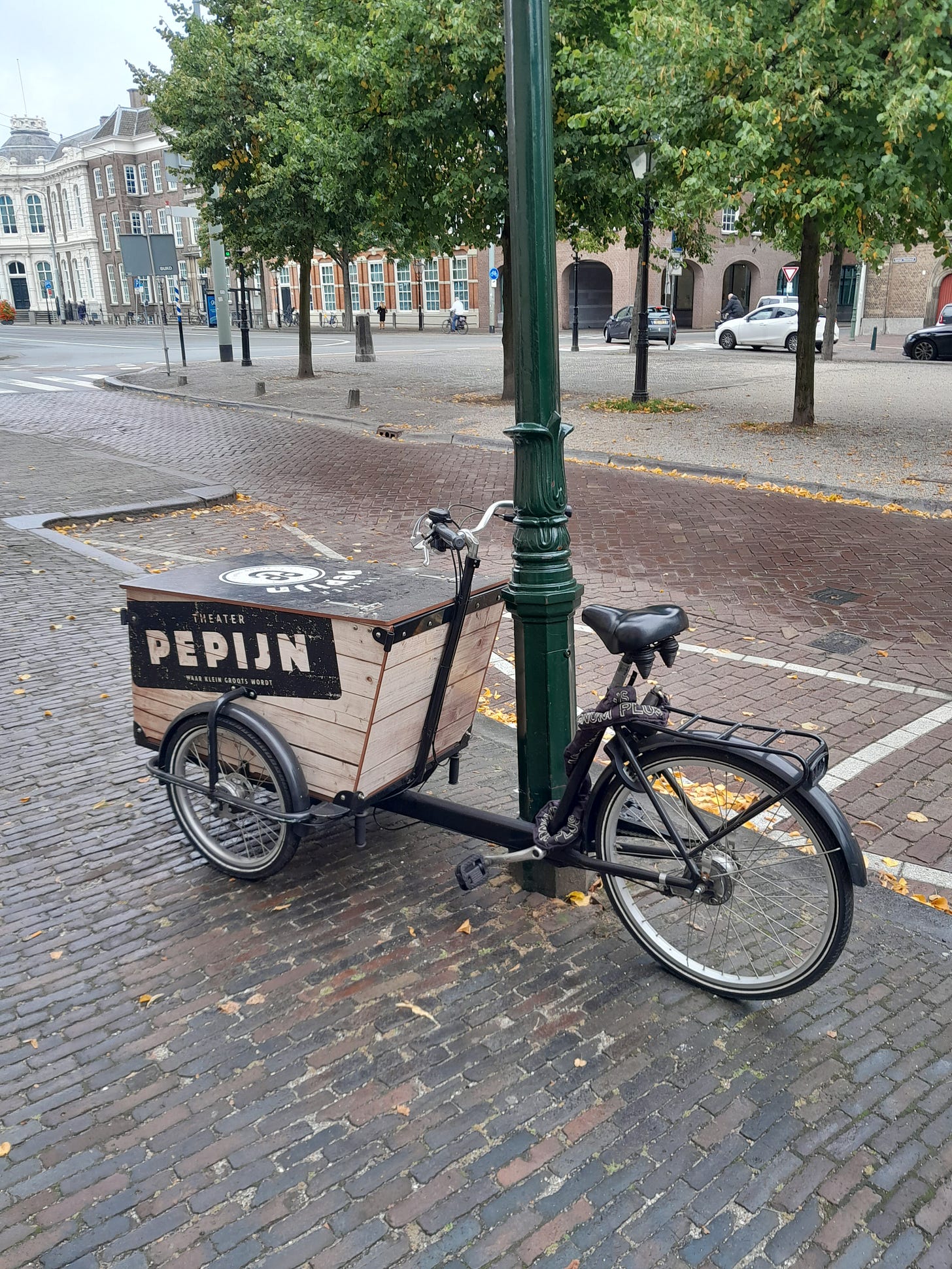Biking in Holland
The parking lot at my church has more bikes on Sunday morning than cars, a first in my church-going experience.
Here’s my September column for the Holland Sentinel…
When I was younger, I used to ride my bike everywhere—to my friends’ houses, mostly, but also to Little League practice, to the library for summer book club, and more. And now, sixty or so years later, I am riding my bike again—to my friends’ houses as before, but also to work, to church, and even to the grocery store. I seldom miss a day on my bike.
I moved to the Netherlands a few weeks ago, and though I have a car if I need it, I bike everywhere, because just about everybody does. Besides, cars are a pain in the neck to park, and the shortest distance between two points is often a bike lane.
Frankly, cars in this country are cumbersome and impractical, and public policy plainly steered things in that direction.
After World War II, the Netherlands, like the U.S., became dominated by cars. Cycling paths were overtaken by roads, and entire neighborhoods in Amsterdam were razed to make room for highways. Between 1950 and 1970, the number of cars in this country exploded from 100,000 to 2,500,000. And along with all the cars came deaths, lots of them, so many that angry citizens rose up and demanded a change.
And a remarkable change it has been.
These days almost a quarter of the Dutch population bikes every day. That number is even higher among under 50-year-olds. For the over 65-year-olds, the number is still an impressive 17 percent. In the morning, from my front window, in a residential neighborhood in the Hague, those numbers actually seem low. My street is filled every day with bikes—moms and dads taking their children to school and going to work.
In 2018 alone the Dutch government invested $390 million in bike infrastructure to persuade even more people to take up biking.
The population of the Netherlands today is over 17 million, but there are 24 million bikes (two million of those are e-bikes). People here were surprised that I took my own bike with me, but then the Dutch will tell you pretty much whatever they are thinking (that’s a topic for a future column).
Here’s an interesting fact: No one but expats (like me) bothers to wear a bike helmet, and yet the fatality rate for accidents involving bikes and cars is six times smaller than that of the United States. That’s undoubtedly because traffic laws tend to be written in favor of cyclists (and because cyclists have been practicing good riding habits since they were young). When I’m on my bike, I usually have the right of way. In the U.S. I would have to drive a Ford F-150 to get the same feeling of owning the road. (I have yet to see a Ford F-150 or anything similar in this country.)
And then there is the subject of health. Though I know of no studies showing direct causation between bike riding and life expectancy, what seems clear is that the U.S. is not a very healthy country compared to other high-income countries like the Netherlands.
In one study I read, the gap in life expectancy between the U.S. and 21 other countries continues to widen (even though until the 1990s there wasn’t much difference). COVID is hardly the only contributing factor to that widening gap. One important factor seems to be how much biking (and walking) people in these other countries do compared to those in the U.S. Rates of obesity, a related measure, are substantially lower elsewhere.
I won’t be staying in the Netherlands when my work is finished next spring. I plan to move back to the U.S. because it’s my home and I love it there. But what seems clear is that we as a country could be better than we are—healthier and less dependent on cars (and the energy required to keep them moving).
When Americans think about biking, they typically think about fitness enthusiasts with bright-colored biking gear on bikes that weigh next to nothing. Or else they think about Paul Newman and Katherine Ross riding languidly together in the movie Butch Cassidy and the Sundance Kid (maybe the best bicycle scene in movie history). But what they don’t typically think about is the bike as a means of transportation, getting somewhere like work, school, or church. The parking lot at my church has many more bikes on Sunday morning than cars, a first in my church-going experience.
I probably won’t be any more successful in getting people to ride bikes than I was in getting people to bring re-usable bags to the grocery store (a topic I covered in a previous column). But we could change if we wanted to. Others have done it.









I'd love it, Bruce. Will happily ride along with your group when you get here!
I got rid of my fancy Nikon camera and seem to get better results with the phone. Also, it's easier to carry around.